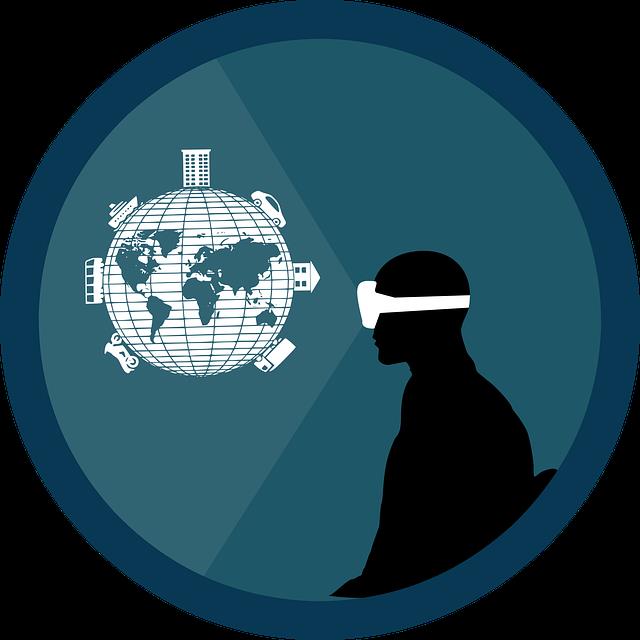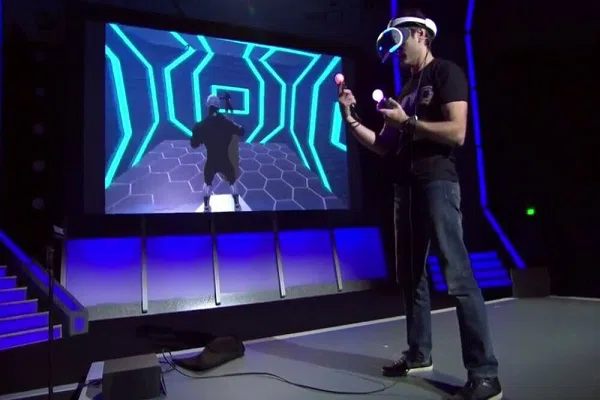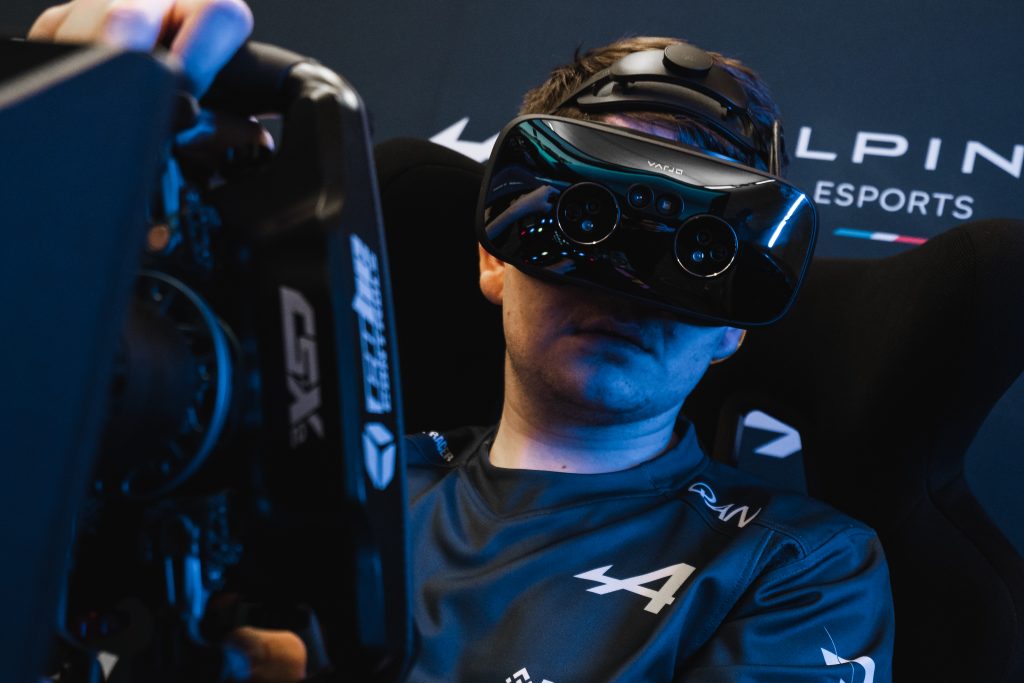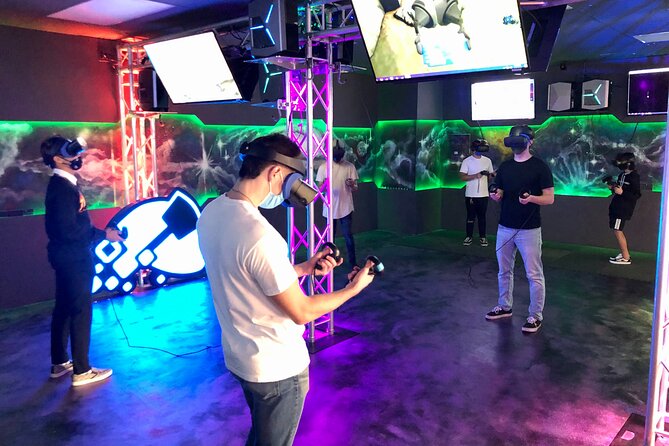
Welcome to the ultimate guide on mastering VR gaming development.
In this comprehensive 10-step guide, we will delve into the intricacies of crafting, marketing, and distributing games in the virtual reality world.
From understanding VR game design and programming techniques to creating immersive art and sound, we will equip you with the essential knowledge and strategies to succeed in this rapidly evolving industry.
Get ready to unlock the potential of VR gaming and take your creations to new heights.
Understanding VR Game Design
To delve into the realm of understanding VR game design, developers must acquaint themselves with the intricacies of immersive storytelling and interactive mechanics.
The VR game design process involves a systematic approach to creating virtual reality experiences that engage and captivate players. It begins with conceptualization and ideation, where developers brainstorm ideas and define the game's core mechanics and objectives.
From there, the design phase focuses on creating the game's world, characters, and gameplay mechanics, while adhering to VR game design principles such as presence, immersion, and interactivity.

Iterative prototyping and playtesting allow developers to refine and fine-tune the game's mechanics, controls, and overall experience.
Essential VR Game Programming Techniques
Developers can enhance their VR game development skills by mastering essential programming techniques that optimize performance, interactivity, and immersion. To achieve this, they need to focus on two key areas: VR game physics simulation and VR game locomotion techniques.
- VR game physics simulation: Developers must implement realistic physics simulations to create a sense of immersion and enhance the player's experience. This involves accurately modeling object interactions, gravity, collision detection, and other physical phenomena within the virtual environment.
- VR game locomotion techniques: Locomotion in VR games can be challenging due to motion sickness concerns. Developers must employ techniques like teleportation, arm swinging, or using a virtual vehicle to provide smooth and comfortable movement for players. This ensures that players can explore the virtual world freely and without discomfort.
Mastering VR Game Art Creation
Developing expertise in VR game art creation is essential for crafting visually stunning and immersive virtual reality experiences. To master VR game art creation, it is crucial to understand and apply the right techniques and tools.
VR game art techniques involve creating 3D models, texturing, lighting, and animation specifically tailored for the VR environment. Artists need to consider the unique challenges of VR, such as optimizing assets for performance and ensuring comfortable user experiences.
Various tools are available to aid in VR game art creation, including software like Unity, Unreal Engine, and Autodesk Maya. These tools provide artists with the necessary capabilities to design, model, texture, and animate virtual worlds.
Creating Immersive VR Game Sound
Continuing from the previous subtopic on mastering VR game art creation, let us now delve into the realm of creating immersive VR game sound. Sound plays a crucial role in immersing players in a virtual reality environment and enhancing their overall gaming experience.
To achieve this, developers must focus on seamless audio integration. Here are three key factors to consider:

- Realistic spatial audio: Utilize advanced audio technologies to create a three-dimensional soundscape that accurately reflects the virtual environment, allowing players to feel fully immersed.
- Dynamic sound effects: Implement dynamic sound effects that respond to player actions and the virtual world, creating a more engaging and realistic experience.
- Interactive music: Design interactive music that adapts to the player's actions, intensifying or calming based on the gameplay, thereby enhancing the emotional impact of the game.
Effective VR Game Testing Strategies
When it comes to VR game development, effective testing strategies play a crucial role in ensuring a smooth and immersive gaming experience.
User feedback becomes invaluable in identifying and addressing any issues or bugs that may arise during gameplay.
Utilizing bug tracking techniques allows developers to efficiently track and resolve these issues.
Performance optimization tips help ensure that the game runs smoothly on various VR platforms.
User Feedback Importance
Effective VR game testing strategies play a crucial role in understanding user feedback and improving the overall quality of the game. User engagement is a key factor in determining the success of a VR game, and gathering feedback from users is essential in ensuring that their needs and preferences are met. Feedback analysis allows developers to identify areas for improvement, uncover bugs or technical issues, and make necessary adjustments to enhance the user experience.
To evoke an emotional response in the audience, here are three reasons why user feedback is important in VR game development:
- Enhanced immersion: By analyzing user feedback, developers can identify elements that contribute to a more immersive experience, such as realistic graphics, intuitive controls, and engaging gameplay mechanics.
- Improved gameplay mechanics: User feedback helps developers understand which gameplay mechanics work well and which need refinement. This allows for the creation of more enjoyable and challenging experiences.
- Bug detection and fixing: User feedback helps identify bugs and glitches that may have been missed during development. Promptly addressing these issues enhances the overall quality and stability of the game.
Bug Tracking Techniques
To ensure the quality and stability of VR games, developers must employ effective bug tracking techniques and testing strategies.

Streamlining bug reporting is crucial in the VR gaming industry, as it helps identify and resolve issues quickly. One way to streamline bug reporting is by implementing automated bug tracking solutions. These solutions automate the process of logging and tracking bugs, allowing developers to focus more on fixing the issues rather than spending time on administrative tasks.
Automated bug tracking solutions also provide a centralized platform for developers and testers to communicate and collaborate, ensuring that everyone is on the same page when it comes to resolving bugs.
How can developers ensure optimal performance in VR games through effective testing strategies?
Performance optimization is crucial in VR game development due to the unique challenges posed by the technology. Here are some techniques to help developers achieve optimal performance:
- Frame rate optimization: Maintaining a consistent frame rate is essential for a smooth and immersive VR experience. Developers should optimize their code, reduce unnecessary rendering, and employ techniques like level of detail (LOD) to improve performance.
- Asset optimization: VR games often require high-quality assets, but these can impact performance. Developers should use efficient asset compression techniques and optimize textures, models, and animations to reduce file size and improve loading times.
- Testing on target hardware: VR games need to be tested on the specific hardware they will be played on. This ensures that performance issues specific to the hardware are identified and addressed.
Monetization Strategies for VR Games
When it comes to monetizing VR games, two common strategies are in-app purchases profitability and ad-based revenue models.
In-app purchases allow players to buy additional content or features within the game, providing a steady stream of revenue.
On the other hand, ad-based revenue models involve displaying advertisements to players, generating income through ad clicks or impressions.

Both approaches have their pros and cons, and game developers must carefully consider which strategy best aligns with their target audience and game design.
In-App Purchases Profitability
In the realm of VR gaming development, maximizing profitability through in-app purchases is a crucial aspect that requires strategic planning and implementation. In app purchases analysis and monetization tactics play a significant role in determining the success of a VR game.
Here are three key points to consider:
- Pricing Strategy: Carefully set the price of in-app purchases to strike a balance between generating revenue and maintaining player satisfaction. Experiment with different price points to find the optimal price that encourages purchases without alienating users.
- Limited-Time Offers: Create a sense of urgency and exclusivity by offering time-limited in-app purchase deals or discounts. This strategy can encourage players to make impulsive buying decisions, increasing revenue and engagement.
- Value Proposition: Ensure that the in-app purchases provide meaningful value and enhance the gameplay experience. Offering unique and desirable virtual items, power-ups, or exclusive content can entice players to spend money on in-app purchases.
Ad-Based Revenue Models
Maximizing profitability in VR gaming development extends beyond in-app purchases; ad-based revenue models offer an alternative monetization strategy for game developers. Ad-based revenue models involve integrating advertisements into the VR gaming experience, allowing developers to generate income by displaying ads to users.
To implement ad-based revenue models effectively, developers need to consider the potential challenges. One such challenge is the prevalence of ad blocking software, which can hinder the effectiveness of ad-based revenue models. Developers must find ways to deliver ads that bypass ad blocking software or provide value to users, so they willingly engage with the ads.
Another crucial aspect is ad targeting algorithms, which enable developers to deliver personalized ads to users based on their preferences and behavior. By leveraging these algorithms, developers can ensure that the ads displayed are relevant and appealing to users, increasing the likelihood of engagement and generating higher revenue.
Effective Marketing for VR Games
Developers must prioritize the strategic planning and execution of their marketing campaigns to effectively promote their VR games. The success of a VR game heavily relies on its visibility and reach in the market.

Here are some key strategies to consider for effective marketing:
- Social media promotion: Utilize platforms like Facebook, Twitter, and Instagram to create a strong online presence for your VR game. Engage with your audience, share updates, and create captivating content to generate interest and excitement.
- Influencer partnerships: Collaborate with influential gamers, YouTubers, and streamers who have a large following and a strong influence in the gaming community. By getting them to play and promote your VR game, you can reach a wider audience and gain credibility.
Implementing these strategies will help create buzz around your VR game and attract more potential players, ultimately increasing its success in the market.
When it comes to distributing VR games, developers need to consider their target audience and the platforms that cater to them. Understanding the demographics and preferences of the VR user base is crucial in determining which platforms to prioritize.
Developers should ensure that their games are compatible with the chosen platforms, taking into account factors such as hardware requirements and software compatibility.
Targeting VR User Base
How can VR game developers effectively distribute their games to the right platforms and target their desired user base?
To ensure success in distributing VR games to the right platforms and targeting the desired user base, developers need to consider several factors. Here are three key strategies:
- Market research: Conducting thorough market research helps identify the target audience's preferences and interests. This information can guide developers in creating engaging VR game narratives that resonate with the intended users.
- VR game accessibility and inclusivity: Making VR games accessible to a wide range of users is crucial for maximizing the potential user base. Developers should consider incorporating features such as adjustable difficulty levels, customizable controls, and support for different VR platforms to ensure that their games can be enjoyed by as many people as possible.
- Platform selection: Developers should carefully select the platforms to distribute their VR games based on the target audience's preferences and the platform's popularity. This ensures that the games reach the right users and maximize visibility and potential sales.
In order to effectively distribute VR games to the right platforms and target the desired user base, it is essential to carefully consider platform compatibility.

Platform compatibility challenges arise due to the different hardware and software specifications of various VR platforms. Developers must optimize their VR games to ensure smooth performance and compatibility across different platforms. This involves adapting the game to work seamlessly with different VR headsets, controllers, and tracking systems.
VR game optimization includes optimizing graphics, audio, and user interface elements to meet the performance requirements of each platform. Developers also need to consider the platform's distribution policies and guidelines, as well as any technical limitations that may affect the game's compatibility.
Maximizing VR Game Updates for Success
To achieve success in VR game development, it is essential to maximize the impact of game updates. By implementing effective strategies for maximizing user engagement and carefully scheduling VR game updates, developers can ensure the success and longevity of their games.
Here are a few key considerations to keep in mind:
- Regular Updates: Consistently providing updates not only keeps players engaged but also demonstrates the developer's commitment to improving the game over time.
- Community Involvement: Involving the community in the update process through surveys, feedback sessions, and forums creates a sense of ownership and fosters a loyal player base.
- New Features and Content: Introducing new features, levels, characters, or other content with each update gives players something to look forward to, increasing the excitement and replayability of the game.
Key Considerations for VR Game Distribution
When considering the distribution of VR games, developers must carefully evaluate various key factors that can impact the success and reach of their games.
VR game distribution poses unique challenges that developers need to address. One such challenge is the app store submission process. Each VR platform has its own app store, with specific guidelines and requirements that developers must adhere to. These guidelines include technical specifications, content quality, and user experience standards. Developers must ensure that their games meet these requirements before submitting them to the app store for review.
Additionally, developers must consider factors such as pricing, marketing strategies, and regional availability when distributing their VR games.

Frequently Asked Questions
What Are the Hardware Requirements for Playing VR Games?
To play VR games, certain hardware requirements must be met. This includes a VR headset, a powerful gaming PC or console, motion controllers, and sufficient space for movement. Compatibility between the VR game and the hardware is crucial for a seamless gaming experience.
Optimizing performance in VR games requires testing on multiple devices to ensure compatibility and smooth gameplay. Developers should consider the hardware requirements of each platform, adapt their game accordingly, and implement performance optimization techniques for optimal user experience.
What Are Some Best Practices for Designing User Interfaces in VR Games?
Designing user interfaces in VR games requires careful consideration of various factors. This includes exploring VR game mechanics to create intuitive controls, enhancing immersion through sound design, and ensuring optimal visual clarity for a seamless and immersive gaming experience.
How Can I Ensure My VR Game Is Accessible to Players With Disabilities?
To ensure accessibility for players with disabilities in VR games, developers should prioritize inclusive design principles and incorporate adaptive controls. This allows for a more inclusive and accommodating gaming experience, catering to a wider audience.
What Strategies Can I Use to Prevent Motion Sickness in VR Games?
To effectively reduce VR motion sickness and prevent it in VR games, developers can employ strategies such as implementing comfort options like teleportation or smooth locomotion, reducing latency and frame rate issues, and optimizing visual design and user interface for a smoother experience.
 Business & FinanceHealth & MedicineTechnologyLifestyle & CultureScience & EnvironmentWorld NewsPrivacy PolicyTerms And Conditions
Business & FinanceHealth & MedicineTechnologyLifestyle & CultureScience & EnvironmentWorld NewsPrivacy PolicyTerms And Conditions
